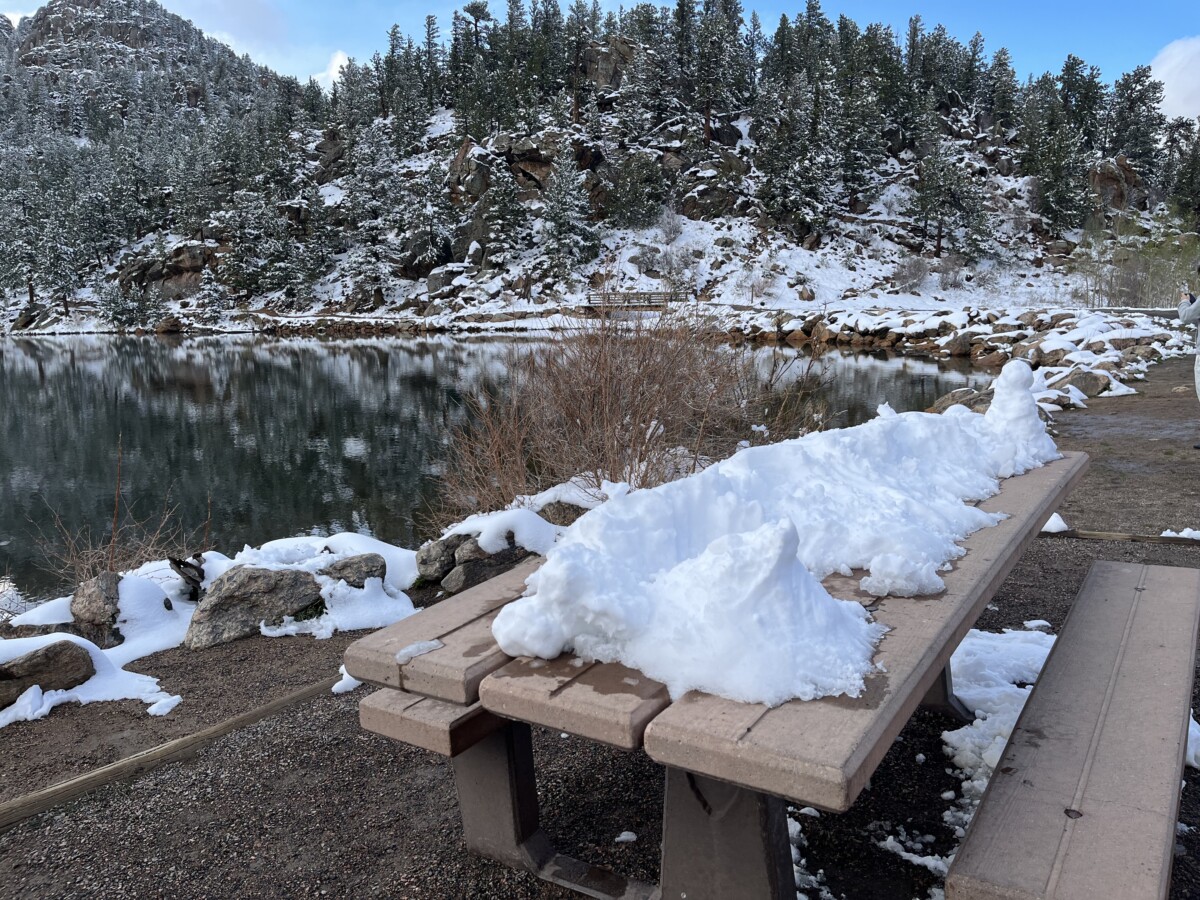We had blown through North and South Dakota in five days, but we still had two days left before our flight out of Denver. Looking at a map, Rocky Mountain National Park (RMNP) in Estes Park, Colorado called our name. The decision was two-fold. It was close to Denver and we had always planned to return to RMNP after visiting the park for only a few hours back in 2016.
After an afternoon tour of Jewel Cave National Monument in South Dakota, we arrived late in the evening at Estes Park, the gateway town of RMNP. Although we knew snow flurries were predicted (even in late May), we woke up to a winter wonderland. Over five inches of snow covered everything in sight!
Lake Estes
Wanting to explore the surroundings, I bundled up (it was 22 degrees outside) and walked along the shoreline of Lake Estes just outside our hotel to the major part of town. The snow was the big news story of the day and I even got a picture with Dillon Thomas of CBS4 Denver reporting at the lake.
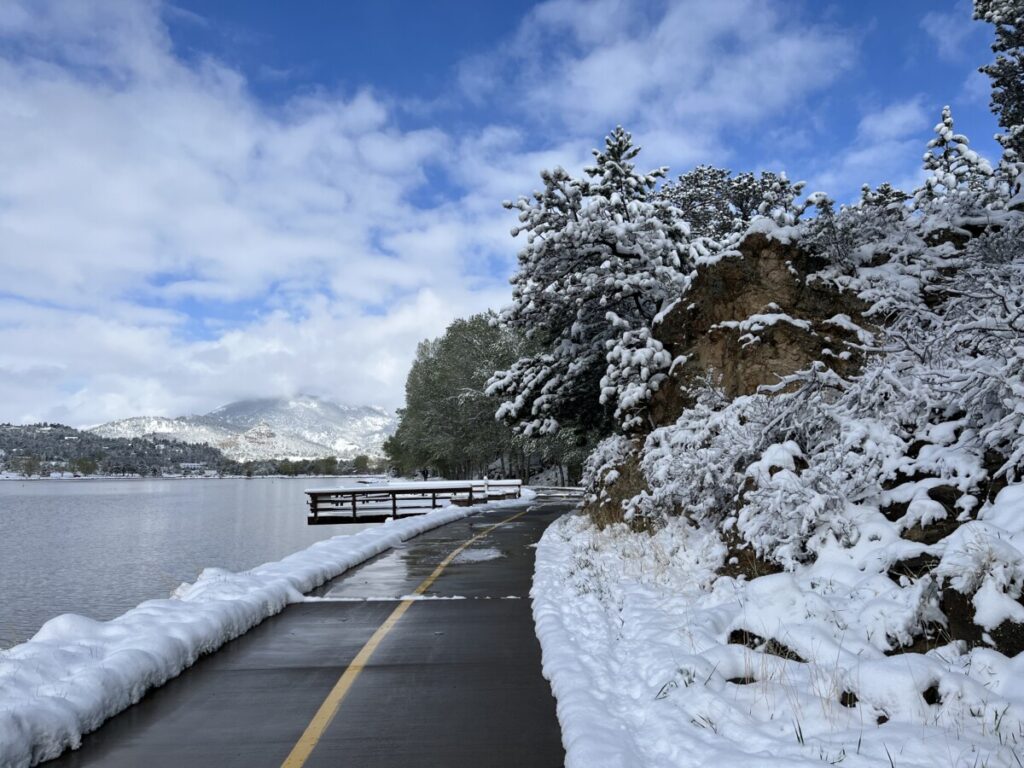
Partially blue skies, snow-piled trees, the Rocky Mountains in the distance, and a beautiful lake. What more could one want? All along the 1.7-mile walk to the Estes Park Visitor Center, I kept stopping to take pictures.
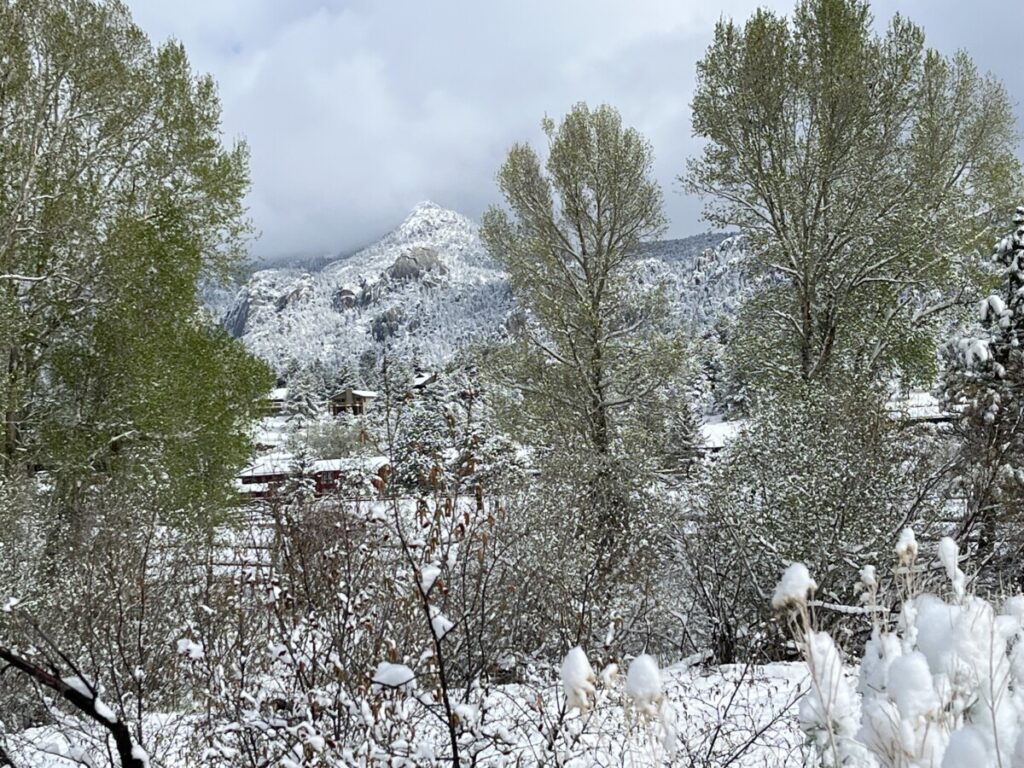
Soon, I met DH and Thing 2 downtown for coffee. That’s another thing this gateway town of 6,500 residents offers – lots of local coffee shops such as Kind Coffee, Mile High Coffee House, and Coffee on the Rocks.
RMNP
Although I could have spent the day hanging out at Estes Park, we departed for RMNP a few miles away. At the Beaver Meadows Visitor Center, the park ranger said we needed snowshoes to safely hike Bear Lake. Instead, he recommended two shorter walks around Sprague Lake and Lily Lake.
About RMNP
RMNP became a national park in 1915 from lands acquired during the Louisiana Purchase in 1803. Inaccessible by railroad, the park’s major east/west thoroughfare is the CCC-built, 48-mile Trail Ridge Road. Because it climbs over 12,000 feet in elevation, the park service closes the scenic road during the winter months.
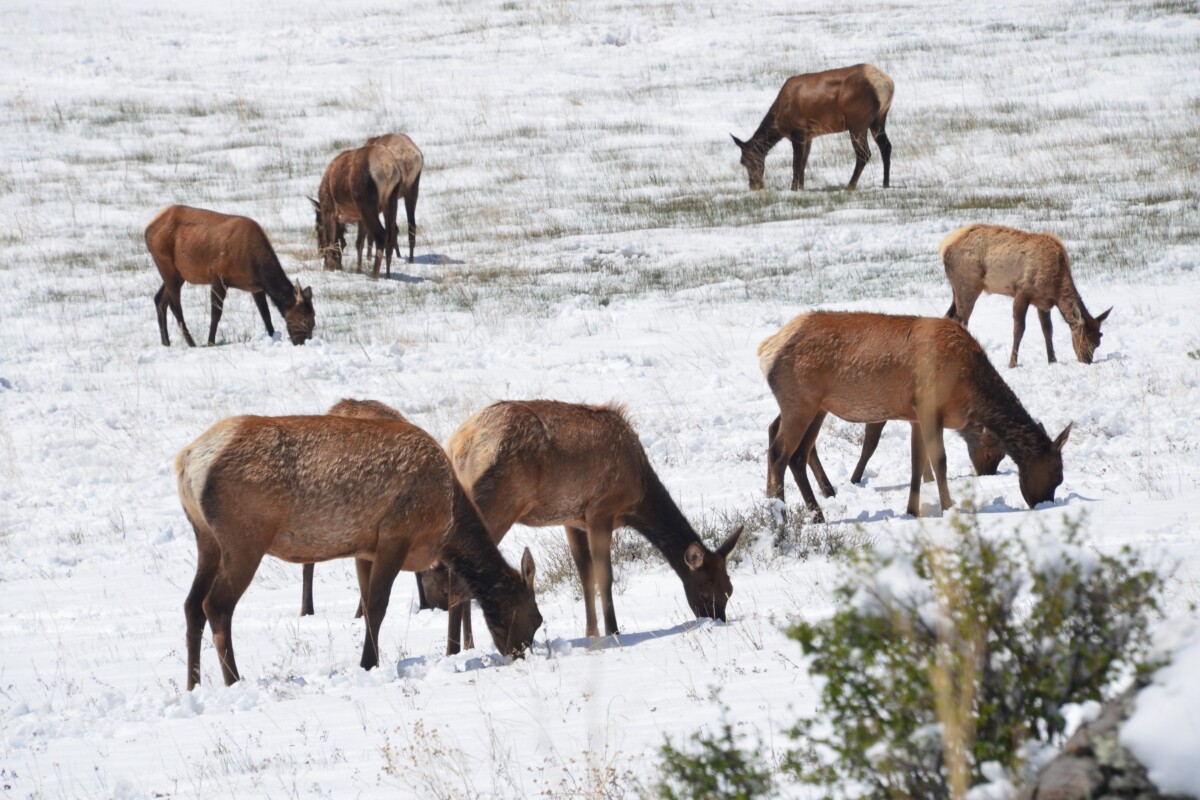
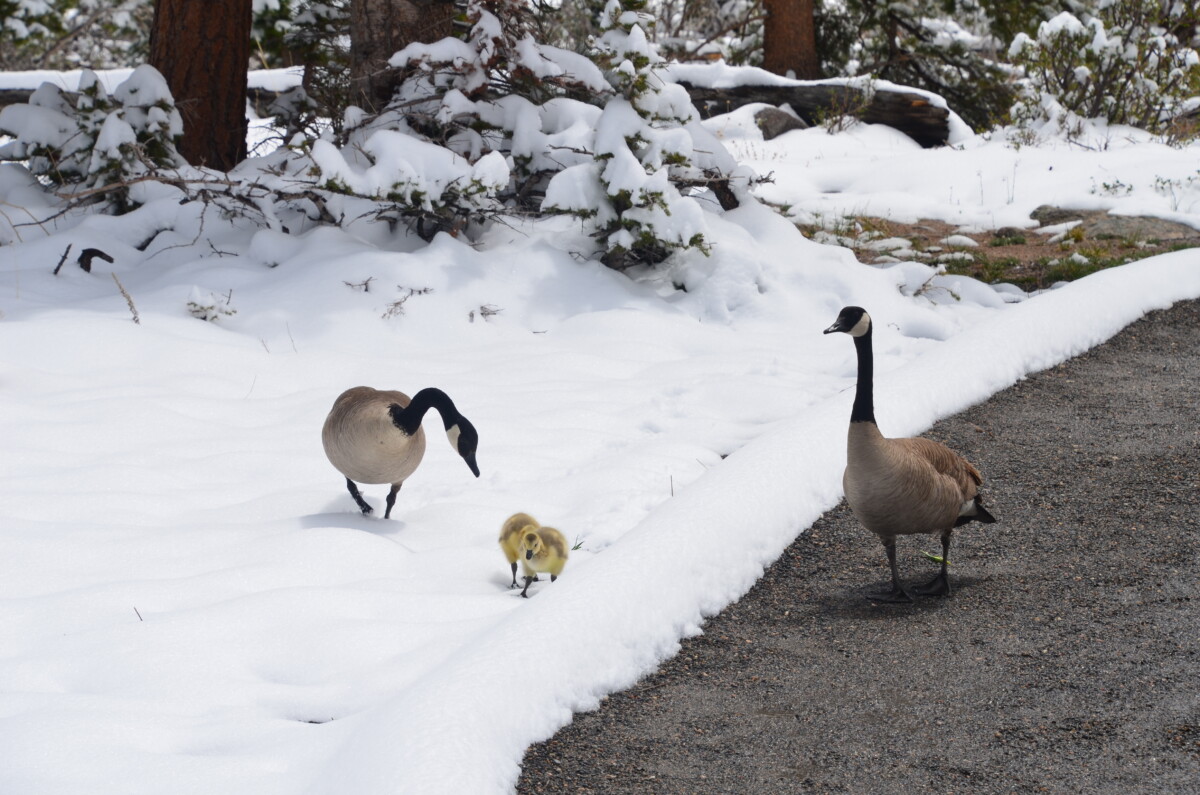
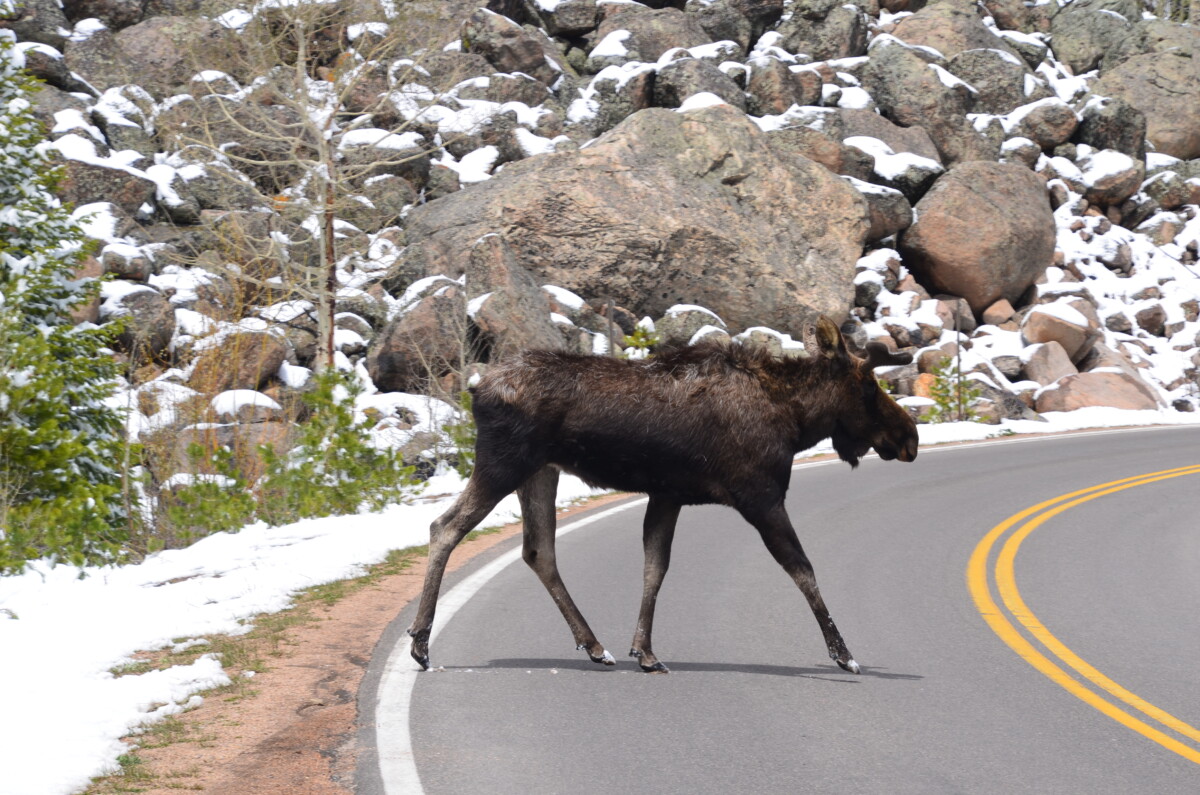
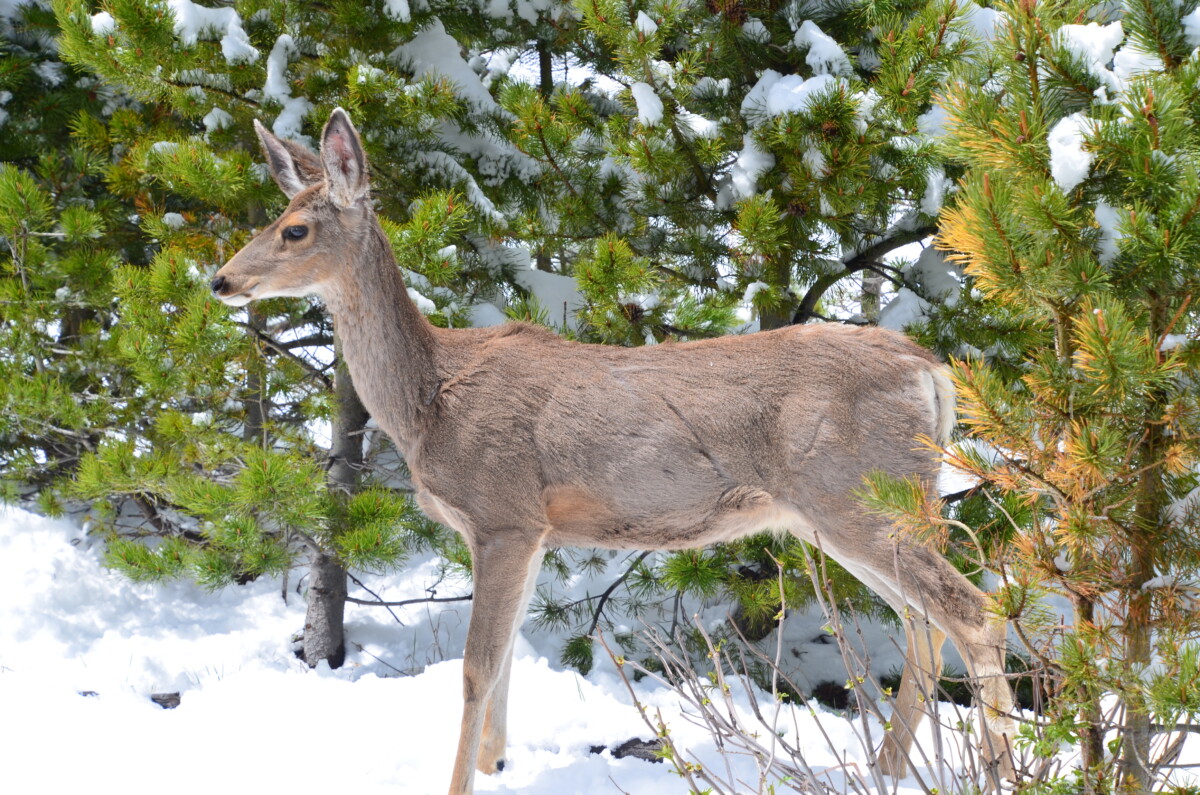
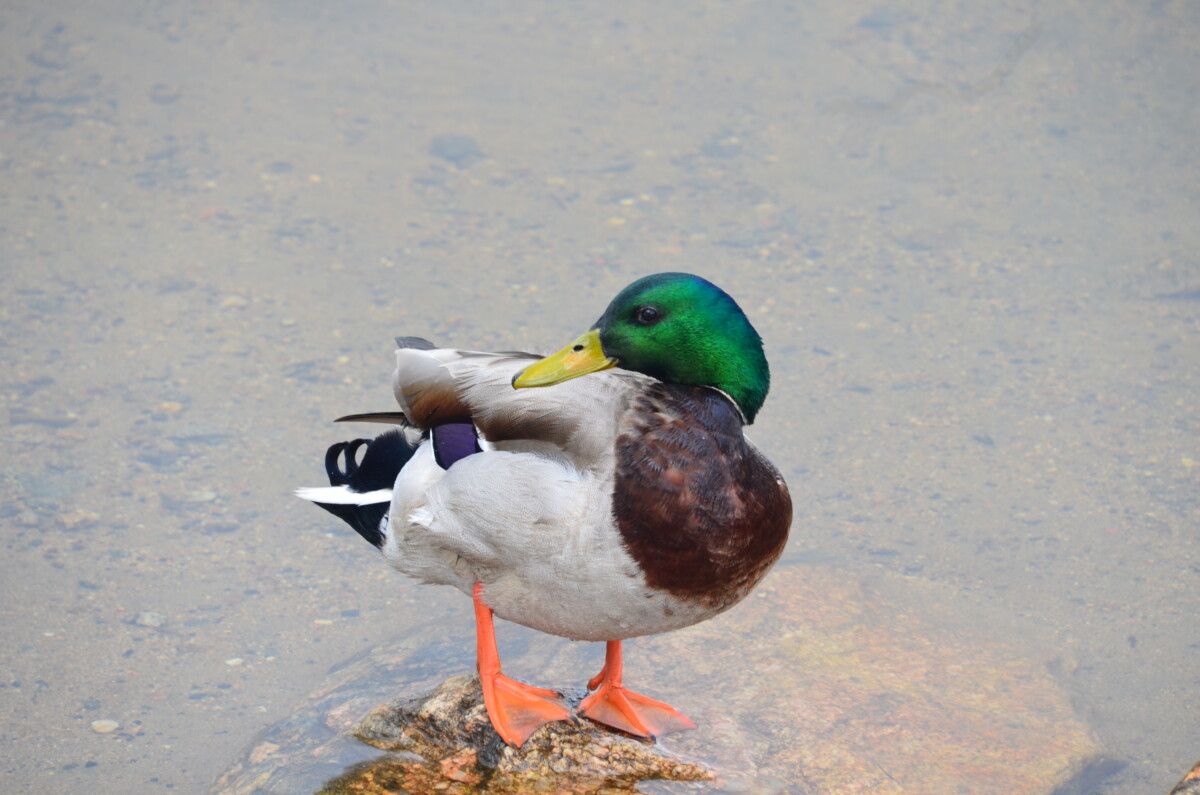
With 250,000 acres of designated wilderness, it’s no wonder RMNP boasts some of the best wildlife viewing for enthusiasts. Over 60 species of mammals and 260 species of birds call the park home. The only thing we looked for, but didn’t see were the Bighorn sheep.
Sprague Lake
At the trailhead, we set out on the flat, paved path next to the 13-acre Sprague Lake. A placard pointed out Hallett’s Peak, part of the Continental Divide in the distance. Although cloud cover blocked the views of the peaks, the aspen trees and lake provided a scenic backdrop to connect with nature.

Many pioneers opened hotels, cabins, and lodges before RMNP became a park. Abner Sprague, who sold his original two-story hotel and cabins to JD Stead, built Sprague’s Lake Lodge in 1910 along the trout pond, which he dammed to make larger. Torn down in 1957, all that remains is one cabin near the trailhead parking lot.
Bear Lake
Dear Hubbie (DH) vacationed with his family a couple of times at RMNP in the summertime. He fondly remembers Bear Lake, which was a top spot for us on our previous visit.
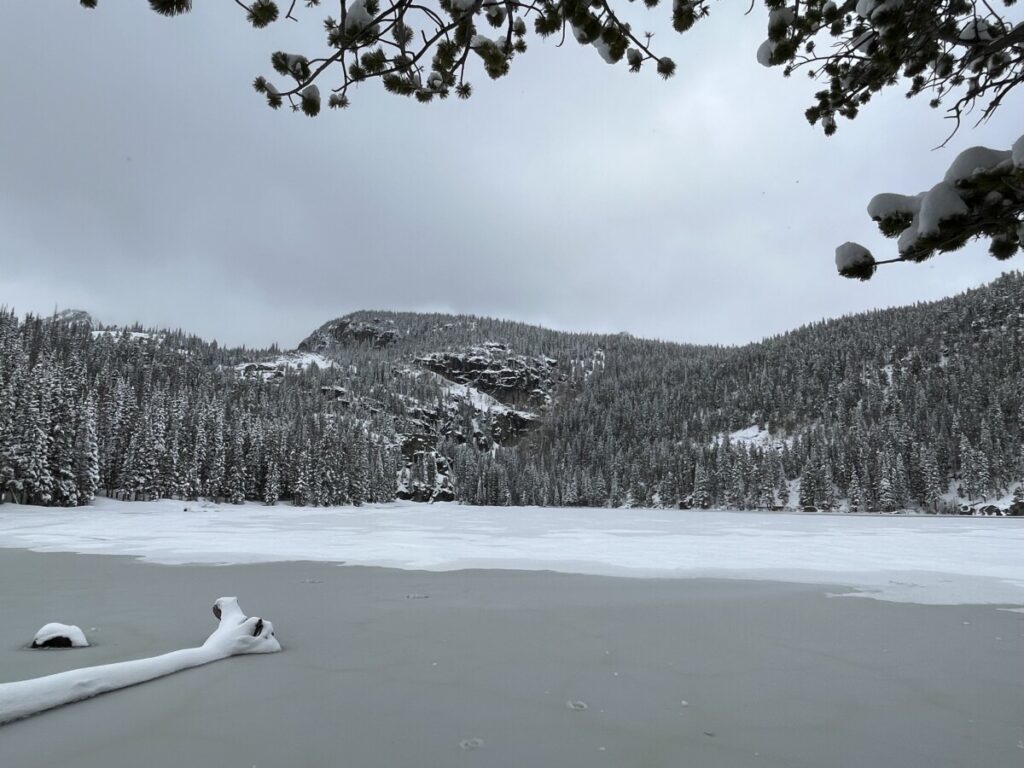
Because we didn’t want to backtrack into town to rent snowshoes, we gingerly stepped on the trail just to see the first views of the iced-over lake. While the picture above looks like a tree fell onto the sandy shores of the 11-acre lake, that’s actually the icy surface of the lake.
Alluvial Fan
Following the audio guide from Just Ahead, we drove over to Alluvial Fan. I remembered seeing a bunch of rocks on our previous visit. This time, we stopped and took the recently-complete 0.5-mile trail to Horseshoe Falls and across the Roaring River.
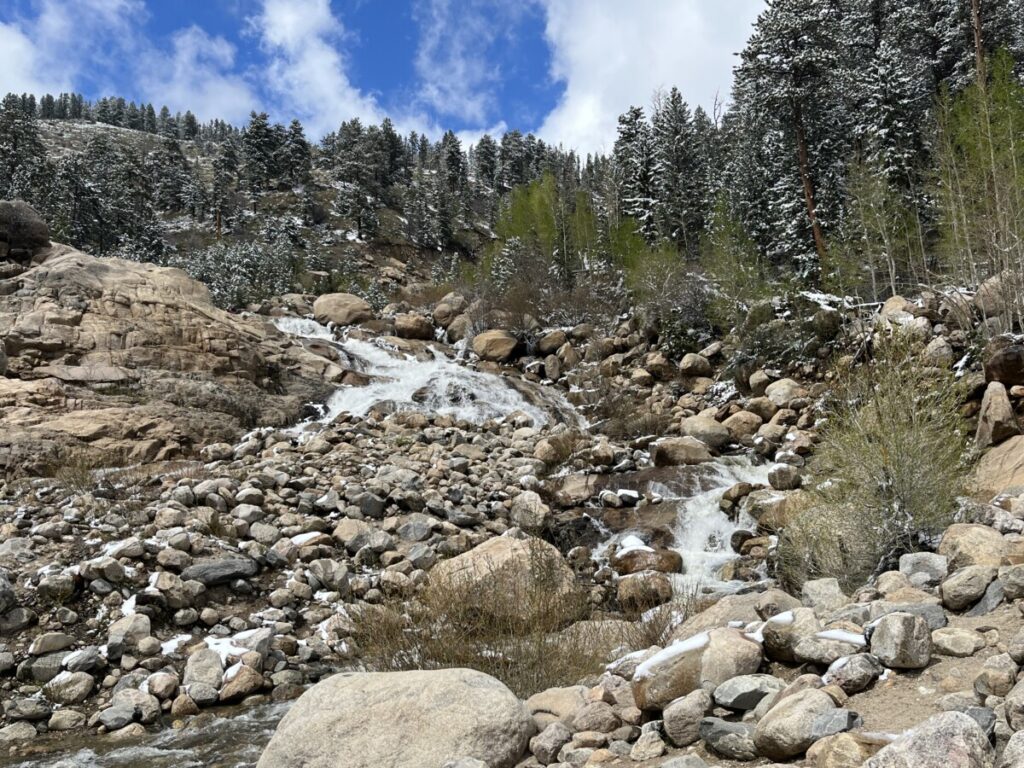
Words can’t do the area justice. Back in 1982, the Lawn Lake Dam ruptured, flooding the area and leaving a 42-acre fan-shaped boulder field on the valley floor. Causing up to $31 million dollars of damage and six feet of flooding in the town, the breach claimed the lives of three campers in the park. Until you get out and hike the trail, you can’t get a feel for how large the boulders really are.
Lily Lake
We toured enough for the day and decided to leave Lily Lake for the next morning before heading to Denver. Similar to Sprague Lake, the hike around Lily Lake is only 0.8-mile with little change in elevation.
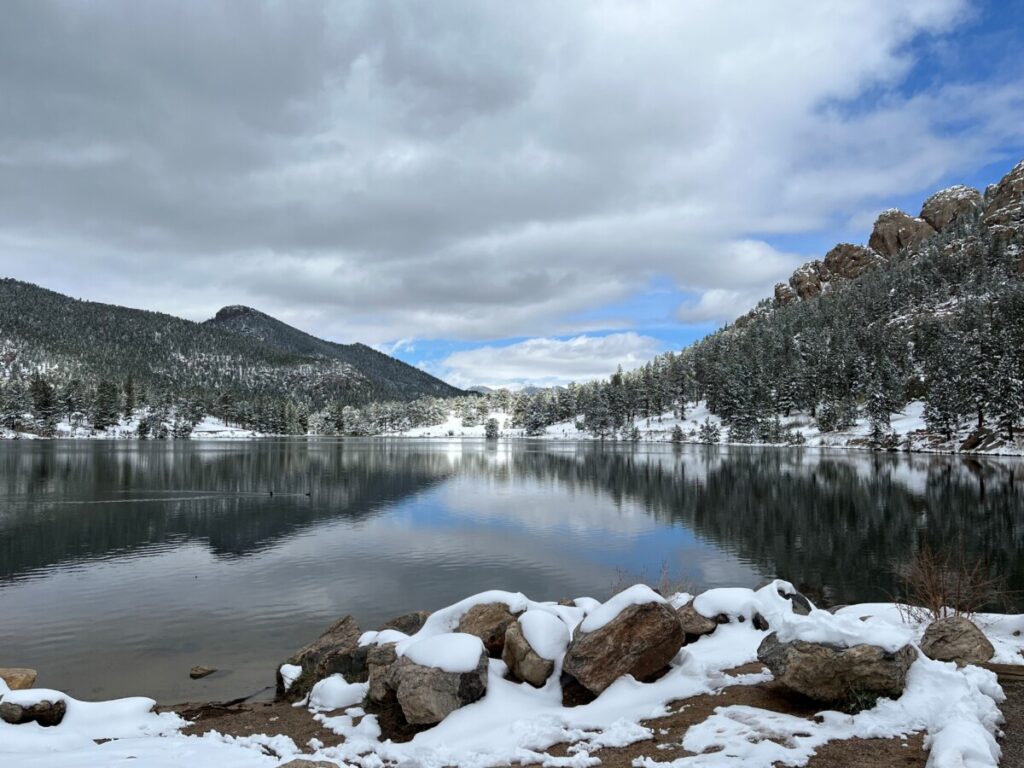
The reflections of the mountains on the small lake provided a tranquil experience that morning. In the distance, we saw the summits of nearby Longs Peak and Mount Meeker. After the hike, we took the Peak to Peak Scenic Byway to Boulder.
More information about RMNP
RMNP is one of the most visited national parks in the US, with an attendance of close to 4.5 million visitors annually. To prevent crowding, the park service requires timed entry permits between Memorial Day and mid-October. Fees to enter the park are $30 per car for one day, $35 per car for seven days, and free with the America the Beautiful Annual Pass.
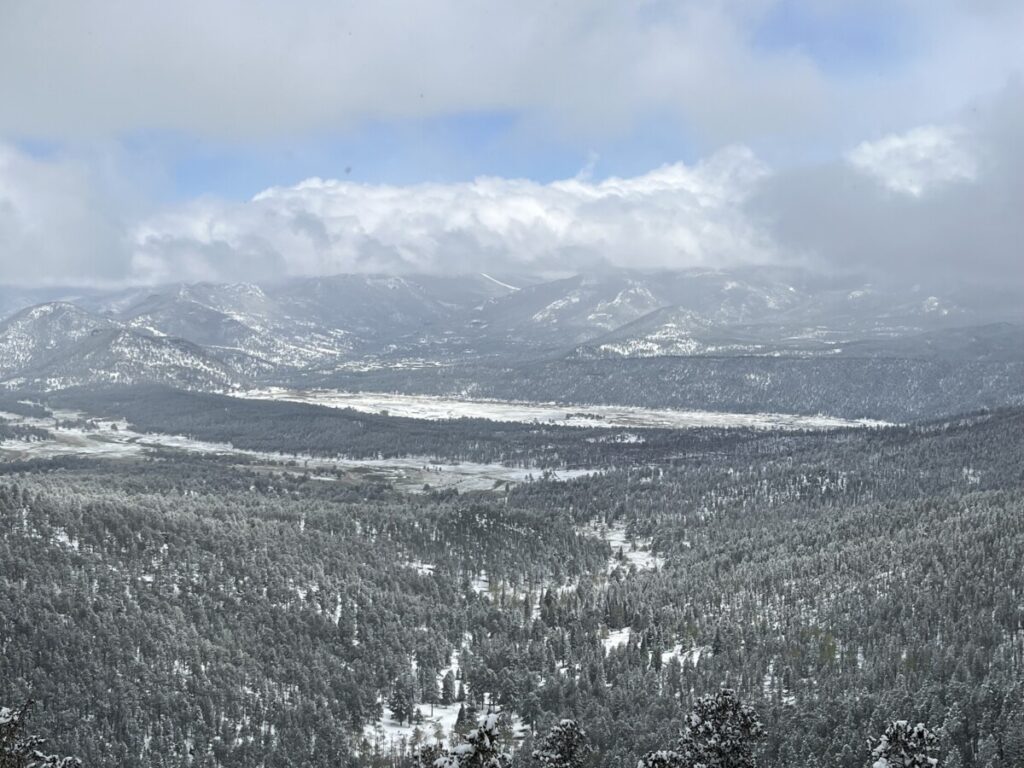
Another factor to curb traffic in the park is a free shuttle system with two separate routes. For those not wanting to drive into the park at all, visitors may purchase a reservation on the Hiker Shuttle for $2.00 that travels between the Estes Park Visitor Center downtown and the transit hub inside RMNP.
For more information about RMNP, click their website here.
Boulder
Trying to squeeze as much into our last day, we stopped by Boulder Falls. Once called the “Yosemite of Boulder Canyon,” the waters cascade down 70 feet over large rocks near the highway.
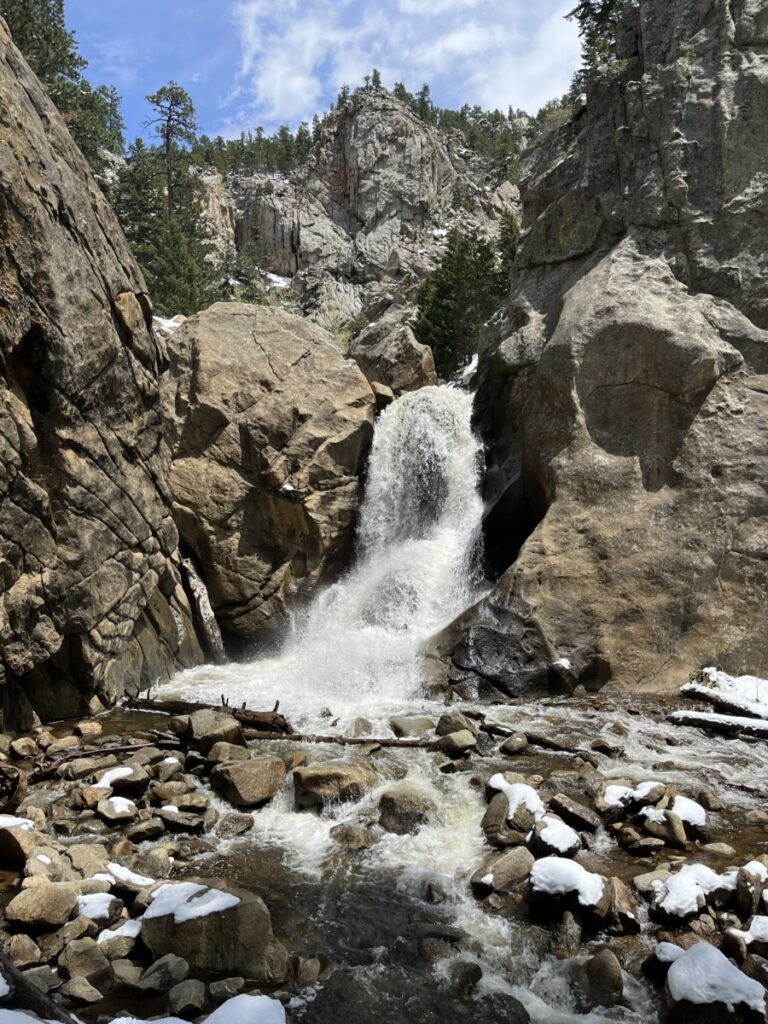
On our previous trip, we spent time at the University of Colorado. This time, we headed to the Boulder Dushanbe Teahouse. Dushanbe, a town in the Central Asian country of Tajikistan, is a sister city to Boulder. To honor its long friendship, over 40 Tajikistan craftsmen hand-carved elements of a teahouse and shipped it in crates to Boulder in 1987. However, due to a lack of funds, it took the city of Boulder until 1998 to reassemble to teahouse.
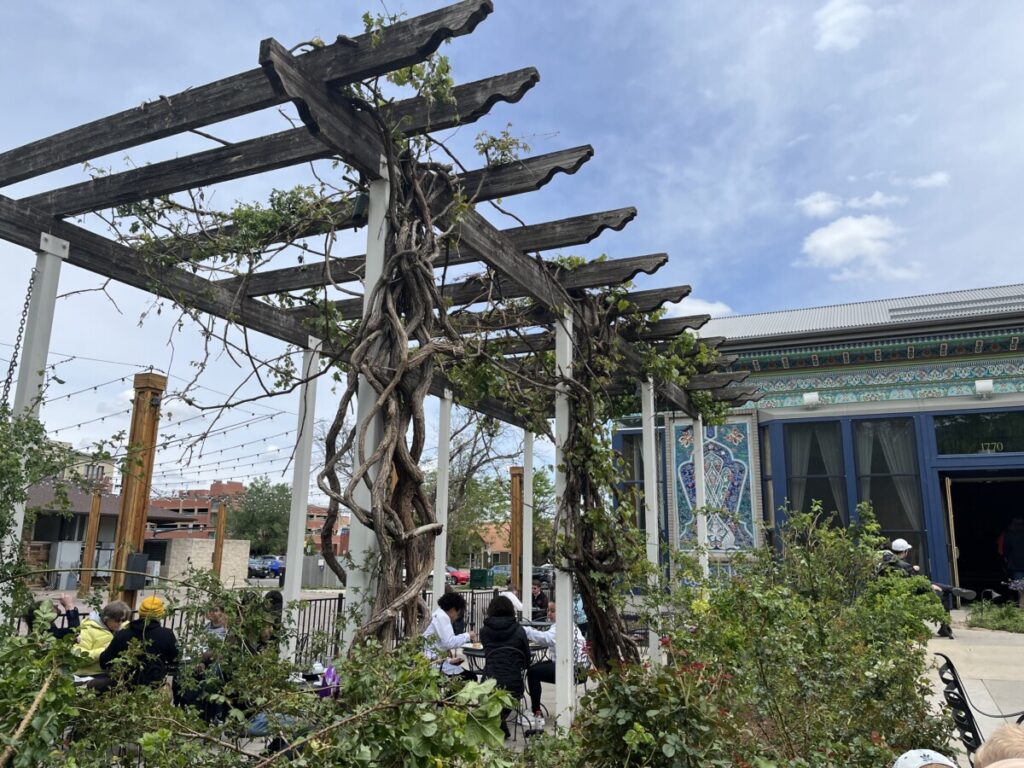
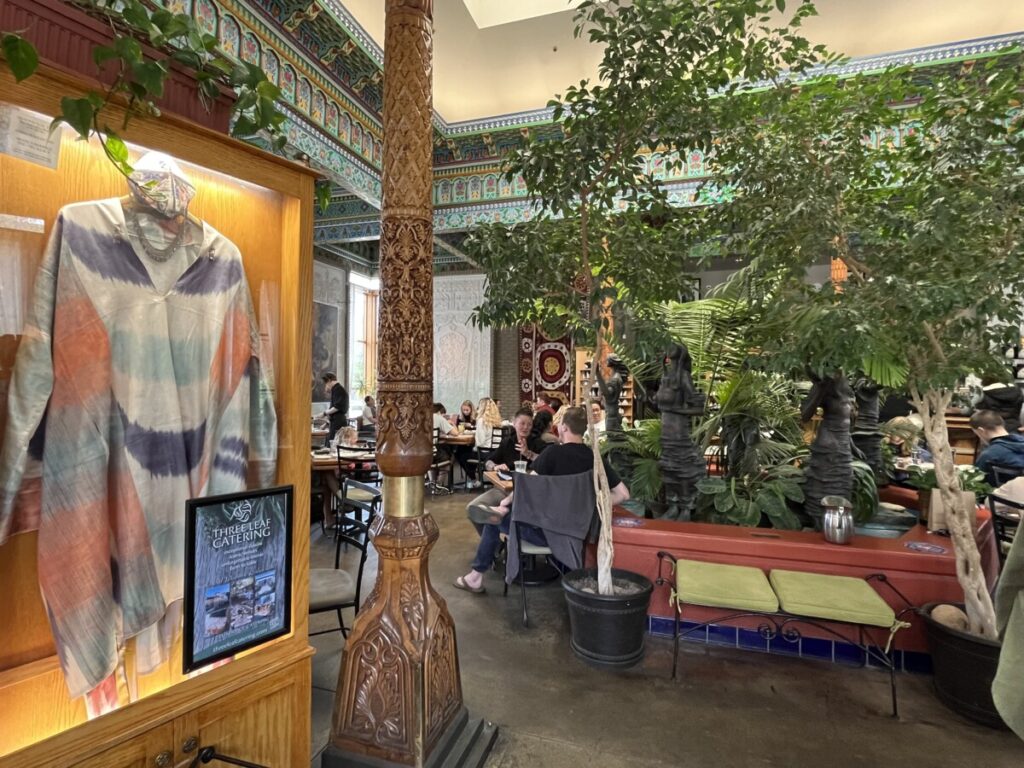
Although crowded inside with a 90-minute wait for a table, the restaurant offers carryout service for patrons to eat at the tables outside. While in line to order, we noted statues, intricately carved columns, and a brightly painted ceiling. And the food was delicious! We feasted on items from the Asian fusion menu and sipped hot black tea. It was the perfect ending to a great vacation!
For more information about Boulder-Dushanbe Teahouse, click here.
